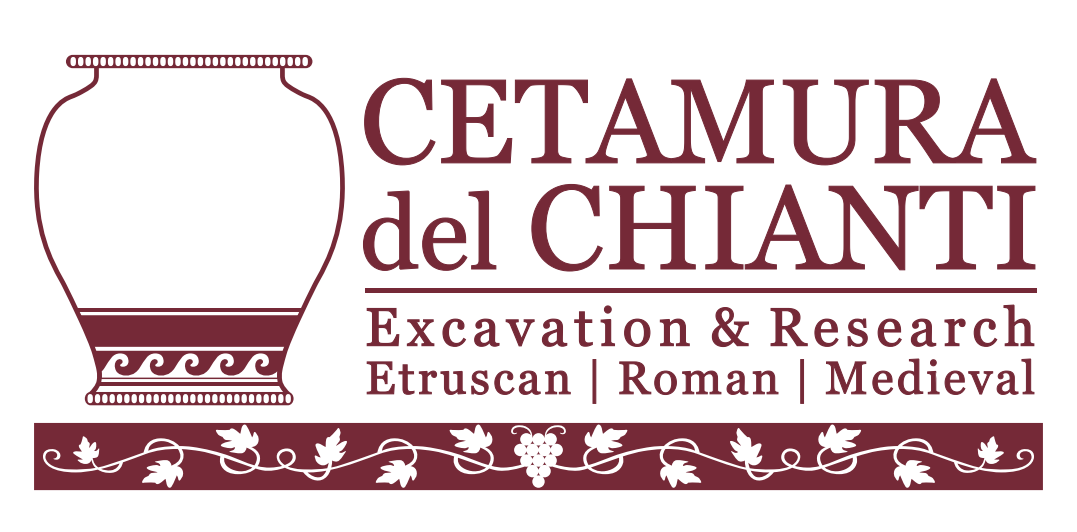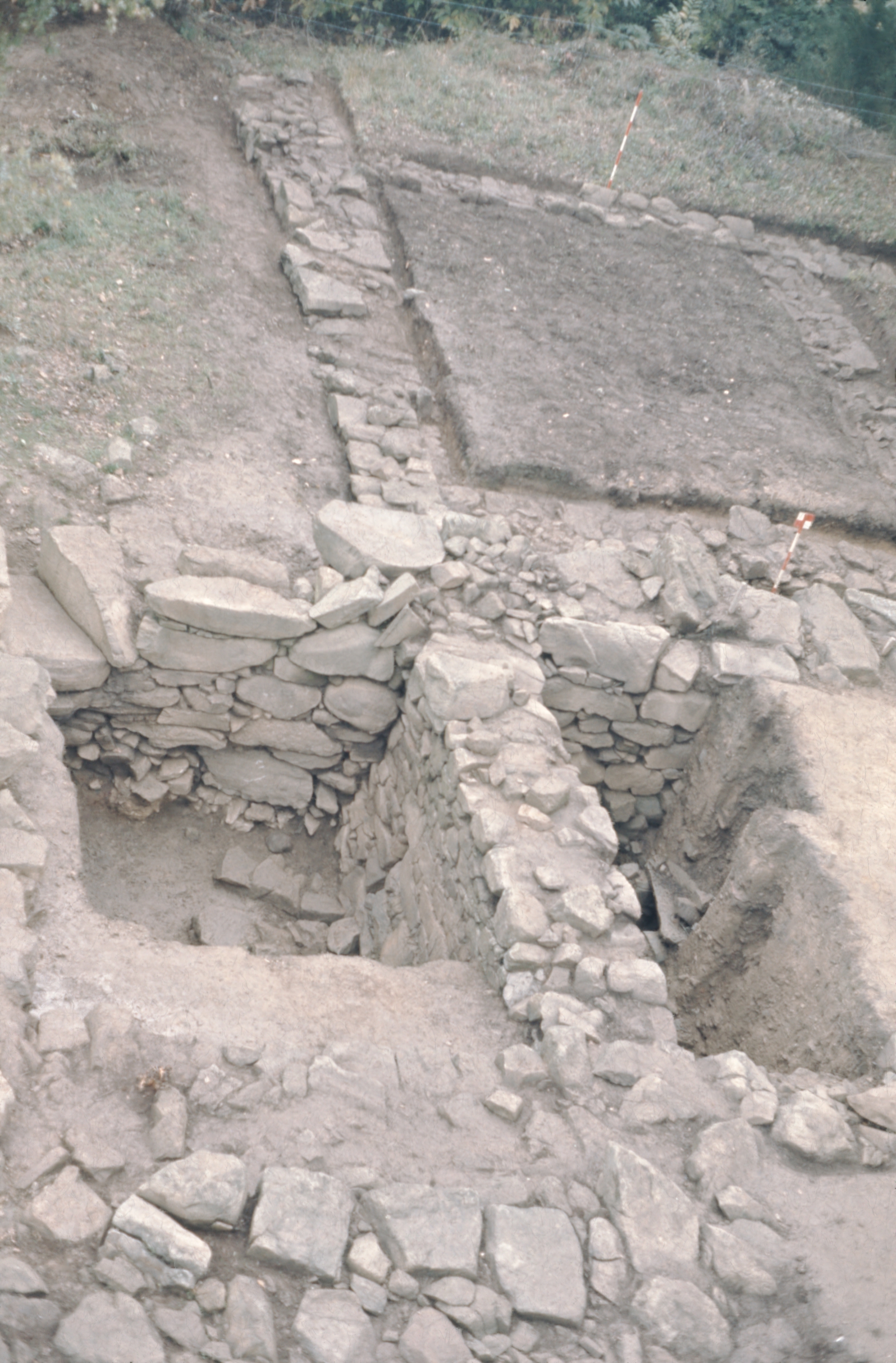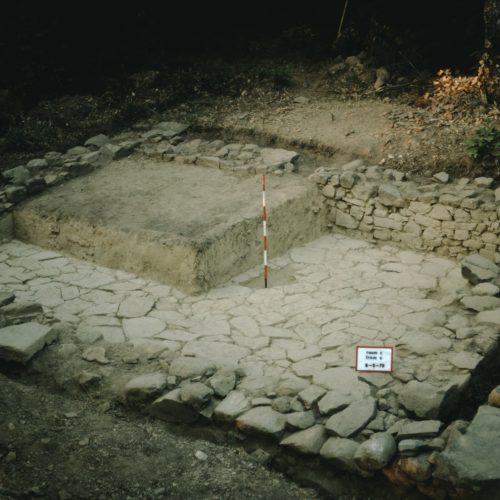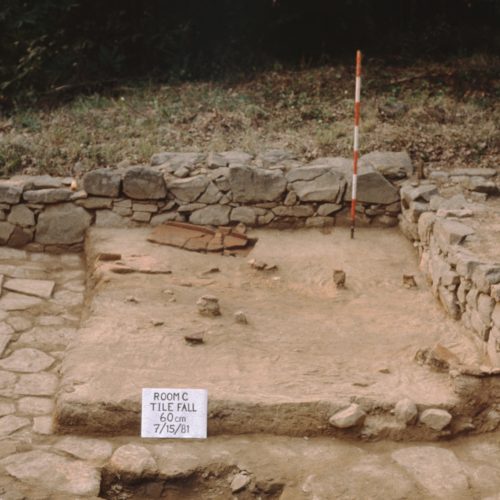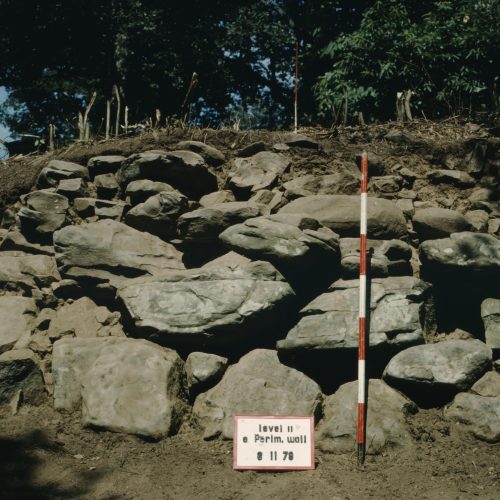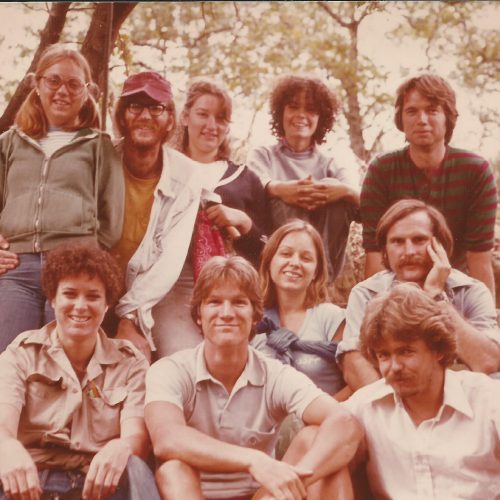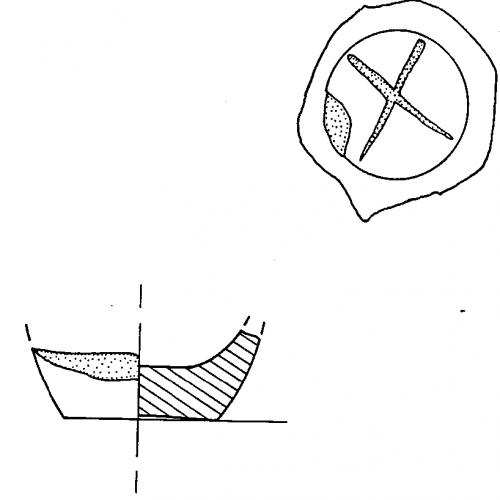1978-1982
Summer Field School
In 1978 the Cetamura project was converted from a course in the FSU Florence program to a stand- alone summer program, in which all attention was devoted to the excavation itself over a period of some 8 weeks. The students were housed in the Chianti area at the local nursery school. On that first summer crew, Patrick Rowe was the field director, under the supervision of Professor John Reich, in an arrangement that would last until 1982.
In the period of 1978-82, the key projects were the excavation of Structure C [a., b., c.], a paved room of the Late Etruscan phase (3rd-2nd cent. BCE), and two other Etruscan buildings, Structures E and F, of unknown purpose but possibly of the same period, and the fortification walls and perimeter structures of Zone I [d.].
During these years a major accomplishment was the surveying and gridding of the site in 3 m. squares, establishing a system that has lasted into the latest excavations. Rowe described the process in his MA thesis at Florida State, Excavations at Cetamura, A Study of the Architecture (1979), a study valuable for its careful record of the walls that were cleaned, mapped and photographed in 1978.
Two members of that first summer crew would have a long history with Cetamura. Charles Ewell, a recent graduate of Yale University, joined the crew for his first season at Cetamura, and with intervals has remained in the project until the present, most recently serving as a director on site. Michael Lee Robertson, an undergraduate at FSU, would continue to work at Cetamura into the 1980’s and would publish a seminal article on Etruscan sigla, the non-verbal marking on pottery and other objects that conveyed various meanings about ownership, commerce and religious ritual. The article appeared in Studi Etruschi, the leading Italian serial publication on the Etruscans (1989).
